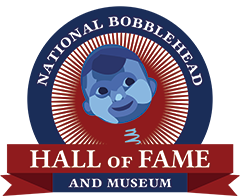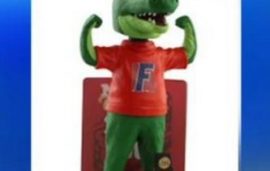
Baseball bobbles its giveaways By PETER FUNT
The 1966 baseball season was particularly memorable in St. Louis, and not just because the Cardinals moved to a new $25 million stadium, hosted the All-Star Game, and every few days sent flame-thrower Bob Gibson to the mound, where he won 21 games and struck out 225 batters.
That year, the Cardinals created a unique promotional giveaway. It was beautiful, it was coveted, and it helped define a marketing concept that has angered fans for over half a century.
The Immortals Coin Set, as it was known, consisted of a 9-inch, red cardboard display, with slots for 12 gold-colored “coins,” honoring local greats, including Stan Musial, Dizzy Dean and Frankie Frisch. But here’s the rub: Instead of distributing it to everyone attending a game, the Cardinals gave the set only to season ticket holders.
The shortsighted marketing strategy of tempting many fans, but pleasing only some, continues today across the Major Leagues, where attendance is slipping, and premiums, such as bobbleheads, often seem more attractive to fans than the action on the field.
This season, for example, the Boston Red Sox are giving away prized bobbleheads on five dates to the first 10,000 people to arrive at Fenway Park. Trouble is, Fenway holds 37,755 people, meaning that at each bobblehead game there could be as many as 27,755 unhappy fans.
The Yankees are also giving away bobbleheads on five dates, to the first 18,000 “guests,” as the team calls its paying customers. But Yankee Stadium holds 54,251 people, leaving room for 36,251 soon-to-be-former guests.
In Houston, where Minute Maid Park holds 41,168 people, the Astros limit most giveaways — including the “floppy summer hat,” the “infinity scarf,” the “Astros gym bag” and four bobbleheads — to only the first 10,000 who show up.
Offering gifts to relatively few fans is really a ploy to bring customers to ballparks hours ahead of time in order to sell them food, beverages and, yes, other souvenirs.
In San Francisco, the Giants are not only stingy with giveaways, they also have the audacity to offer a package of 24 free souvenirs to season ticket holders — a $0 value — for the bargain price of $260.
A few teams, such as the Phillies, Marlins and Angels, give most promotional items to all fans who attend a game. But others seem to be pennywise and fan foolish. In Arizona, the Diamondbacks offered a Kids Bat & Ball Set to kick off this season — but only to the first 5,000 youngsters.
Baseball’s marketing executives have been debating this for years, clearly coming to different strategic conclusions. Some work with simple math, weighing the cost of each item against projected revenue for the specific game; others see a bigger picture in creating fan loyalty.
When former Yankees great Derek Jeter took over this year as the Marlins CEO, he promised a “first class” experience, and followed up by announcing that giveaways will be available to all fans.
That’s very much in the spirit of the guy who started all this, Bill Veeck, baseball’s version of P.T. Barnum. Beginning in 1946, when he ran the Cleveland Indians, Veeck gave away everything from full-size bats to free hotdogs, free lobsters and free chocolate-covered ants. He even staged a “Free Nylon Stocking Day.”
Veeck’s antics often angered fellow owners, but he was a master at bringing fans to the ballpark and making them happy. Veeck even began the tradition of singing “Take Me Out to the Ballgame” in the seventh inning.

